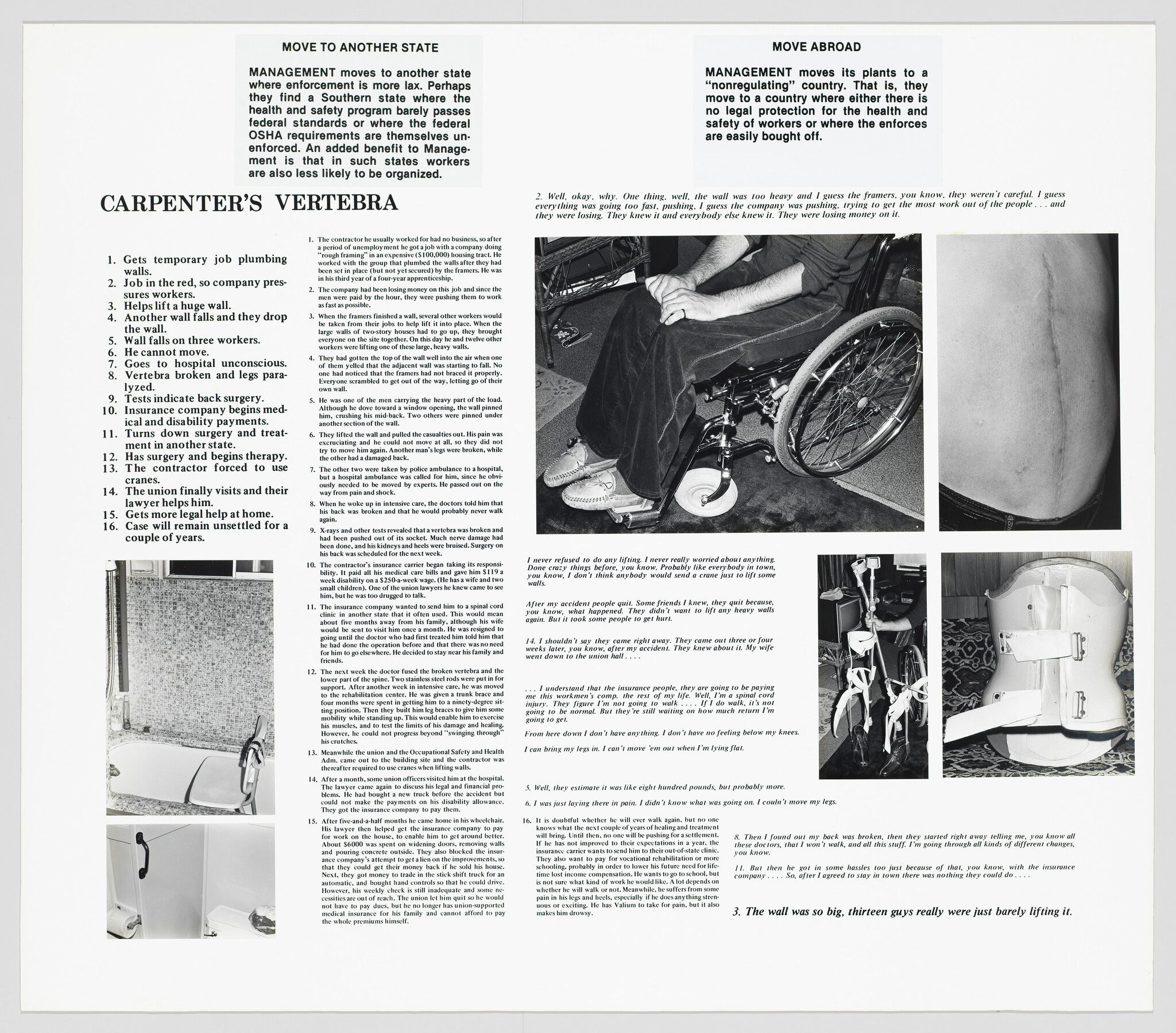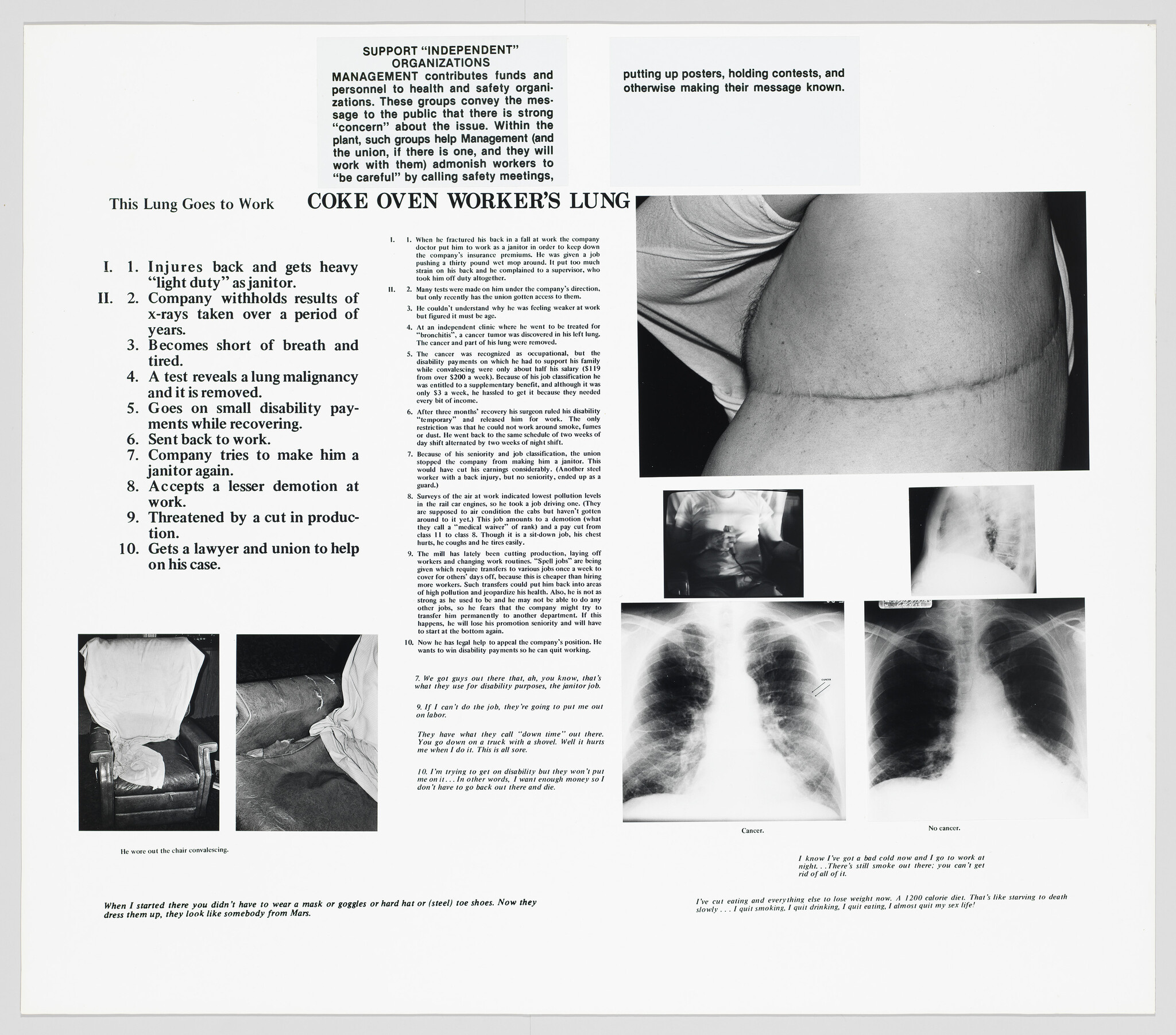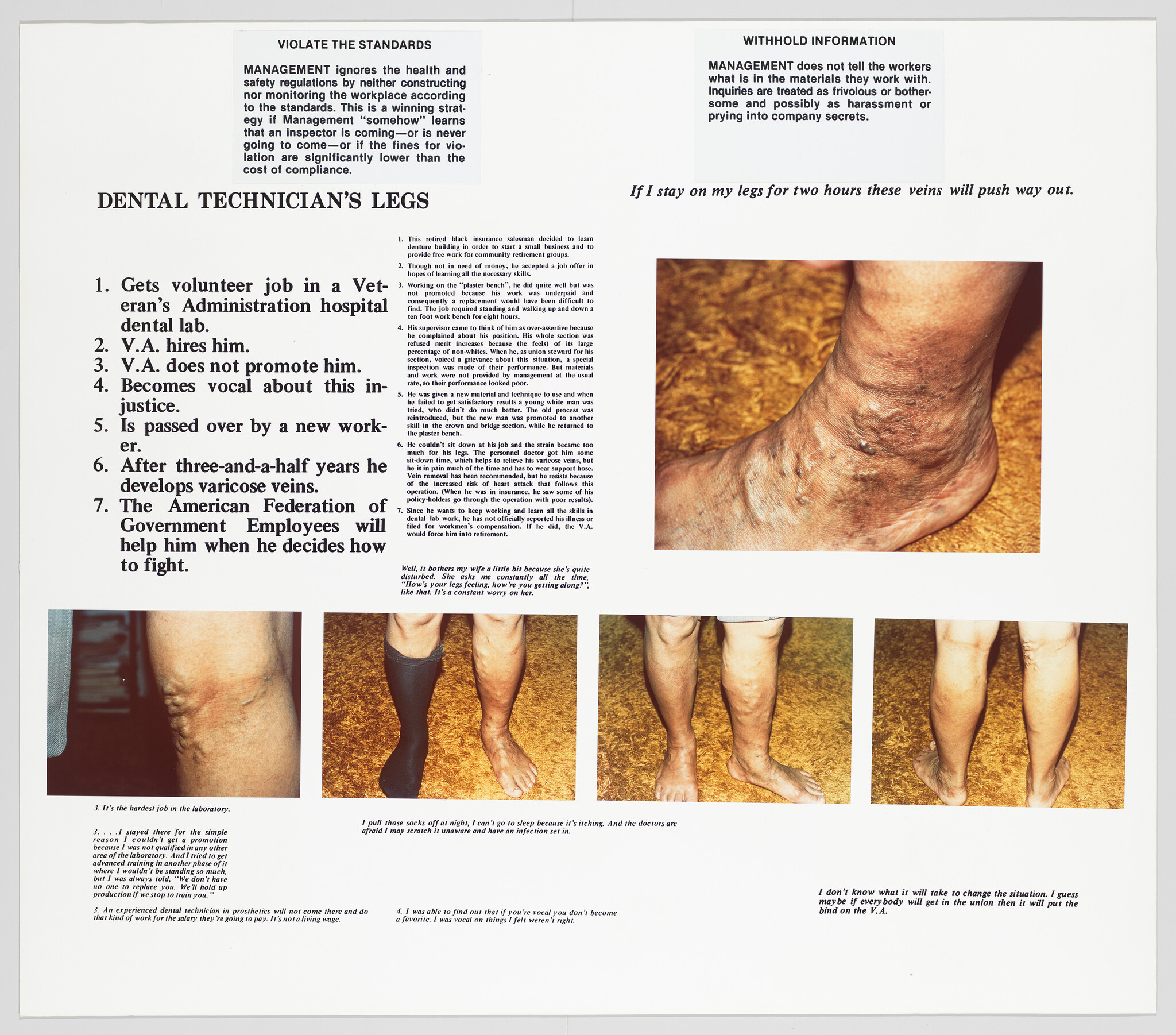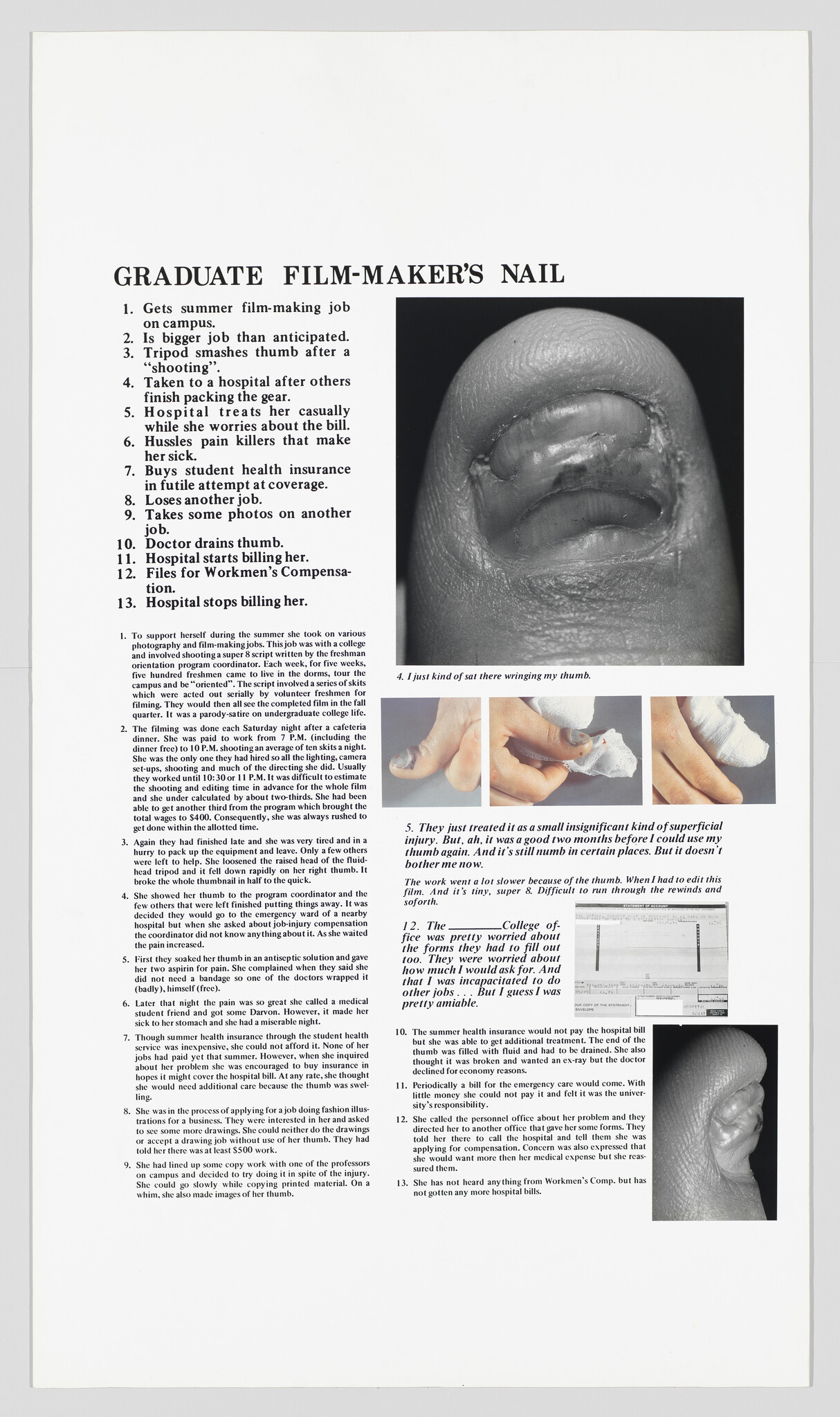Not on view
Date
1976/1978
Classification
Photographs
Medium
Gelatin silver prints on board
Dimensions
Overall: 35 × 40 1/8 in. (88.9 × 101.9 cm)
Accession number
2016.1.7
Credit line
Purchase, with funds from the Photography Committee and the Director's Discretionary Fund
Rights and reproductions
© Fred Lonidier
Part of a series:
The Health and Safety Game
27 works










